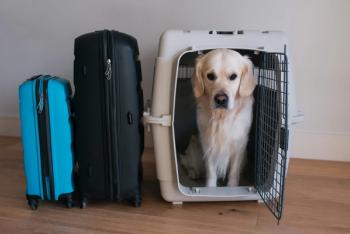
USDA unveils plans for animal ID repository
Washington — Federal regulatory agents, at presstime, announced plans to network the national animal identification system (NAIS), linking private and state-operated animal tracking databases.
WASHINGTON — Federal regulatory agents, at presstime, announced plans to network the national animal identification system (NAIS), linking private and state-operated animal tracking databases.
Question of control: In January, the U.S. Animal Identification Organization became the latest private livestock group to oversee implementation of the NAIS traceability program.
Tentatively titled the Metadata Repository, the system would allow the United States Department of Agriculture (USDA) officials to mine a portal containing various animal identification systems as well as existing databases. The goal: to create a warehouse for tracking livestock nationally.
Due to privacy issues, it's unlikely the Metadata Repository or any such database would be made available to veterinarians, yet Dr. Gatz Riddell contends DVMs will play a role in its inception.
"Veterinarians will have to be involved in helping producers comply with the identification system and the database," says Riddell, executive vice president of the American Association of Bovine Practitioners. "It will be interesting to see how the government will address uniformity across species. Right now, exactly how this will work remains to be seen."
Who will pay?
If Riddell lacks insight into the government's plans for a network, he's not alone. What's clear is that NAIS, administered by USDA's Animal and Plant Health Inspection Service, is a cooperative state-federal-industry initiative being created to track animal movements for disease tracking. It's designed to integrate premises identification, animal identification and animal tracking, allowing animal health officials to pinpoint animals and premises that encounter a foreign or domestic animal disease of concern within 48 hours of initial diagnosis. Such rapid tracing is intended to block the spread of disease outbreaks.
Stakeholders involved in voluntary animal identification and tracking are diverse, to say the least, and it's vague how costs to develop and maintain such a system would be shared among livestock producers. Following USDA's most recent announcement, the National Cattlemen's Beef Association (NCBA) revealed plans to create a private database for the nation's 100-million-plus beef cattle, possibly extending to dairy cattle and bison. Because the proposed system is private, producers likely would be required to pay to be included in it. USDA then could tap the program for its Metadata Repository.
"A memorandum of understanding with USDA that our system would serve as a database component to NAIS is pending," NCBA spokeswoman Karen Batra says. "The NAIS has been evolving for years. Last August, the agriculture secretary said he'd support a database in the private sector."
NCBA leaders tout their industry-specific plan as cost efficient and less burdensome for producers.
Yet private systems go against USDA's original plan regarding NAIS, which initially called solely for government-funded tracking systems. Pork producers, for example, have had success feeding such administrative programs since the 1980s, when state tracking systems for premises and group identification were developed to combat the spread of porcine pseudorabies. That current system could be "tweaked and adapted in no time" for use in the Metadata Repository, predicts Dr. Tom Burkgren, executive director of the American Association of Swine Practitioners.
But any move to make producers pay for it would cause "industry heartburn," he says.
"The secretary of agriculture originally said this would be a government-funded system," he says. "Now there seems to be a reversal from a programming standpoint, where the government will now use private databases. Having multiple databases is a nightmare."
Tentative infrastructure
According to USDA's NAIS Coordinator Neil Hammerschmidt, infrastructure for the government's animal movement network could include upwards of 30 databases with a search engine designed to weed out unlikely matches. "So if we're looking for Animal XYZ, the infrastructure would allow us to work through a portal with the databases that likely would house information on that animal," Hammerschmidt explains. "We're in the process of final evaluations before we move forward. It will be well into this year before we can launch this, if we even go there."
Critics suggest the project's uncertainty is the government's only real guarantee. In May 2005, USDA drafted a strategic timeline for NAIS that included a 2008 goal for federal livestock and premises registration and a 2009 target milestone for animal movement information. At that time, it's assumed producers' reporting of livestock would become mandatory. But no decision has been made to implement those target dates. NAIS cannot impose mandatory reporting without following federal rule-making processes, Hammerschmidt contends. "In reality, those timelines are outdated because we would have had to start proposed rules already," he says.
State efforts
While NAIS requires each state's animal health authority to be responsible for livestock premises identification — information that would then enter the federal repository — smaller programs already have been put in place. In Wisconsin, state lawmakers passed mandatory premises registration for all livestock. Indiana and Texas officials, among others, also are considering similar measures.
Such state regulations cannot supersede future federal NAIS laws, yet Hammerschmidt notes national regulations would act as minimum standards for the entire country. Individual state laws can go beyond USDA requirements, he says, making it "essential" for veterinarians to be well informed of all identification regulations. Every state currently employs a voluntary system, which has provided USDA with nearly 200,000 premises registrations, Hammerschmidt adds.
"This supports animal health activities nationwide," he says. "Identification should be part of the overall animal health program."
For more information, visit http://
Newsletter
From exam room tips to practice management insights, get trusted veterinary news delivered straight to your inbox—subscribe to dvm360.






